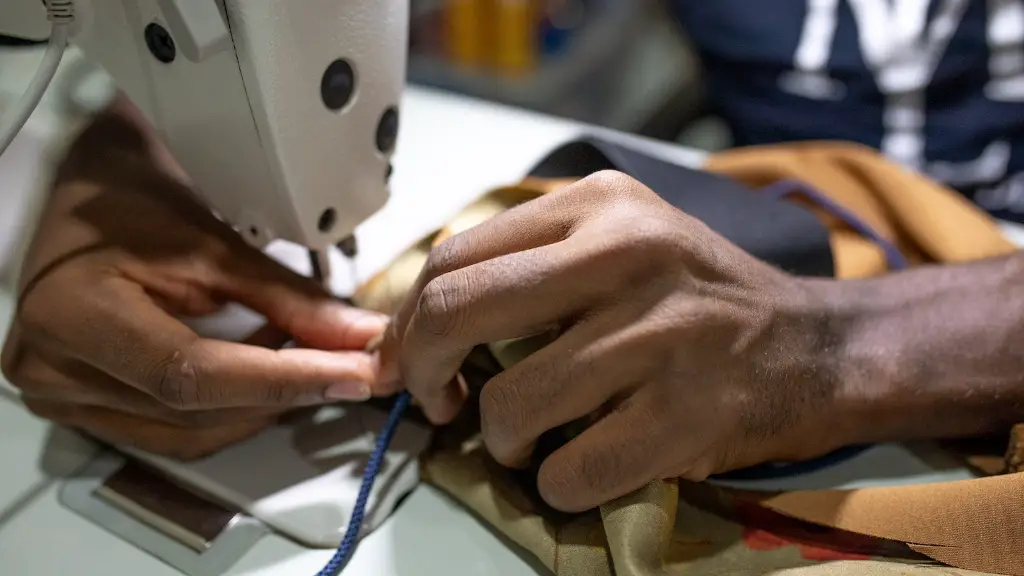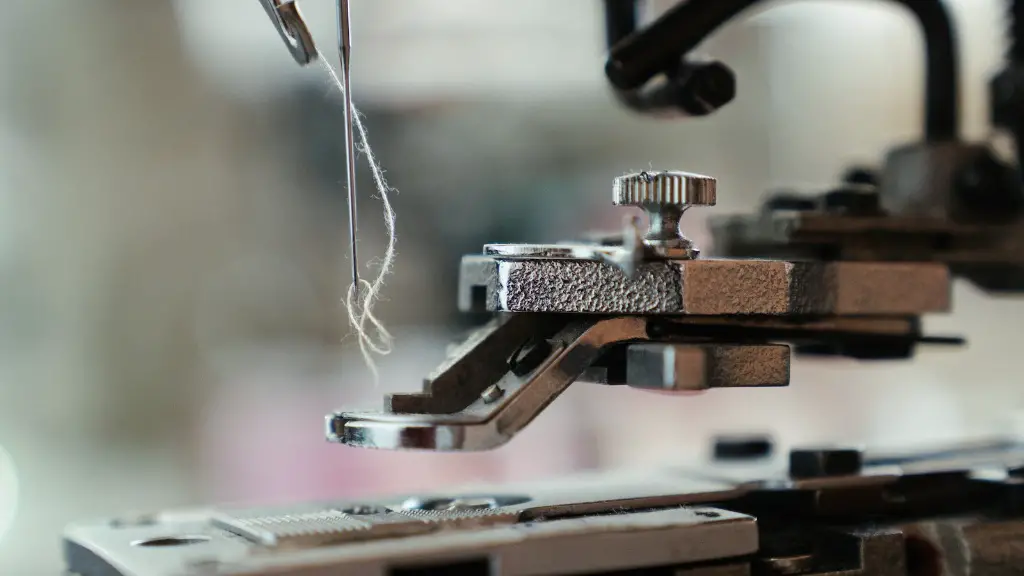Parts of a Serging Sewing Machine and Their Functions
Serging sewing machines are machines that use an overlock stitch for finishing an edge of fabric. They are used to sew hems, seams, and to enclose raw edges of fabrics. Compared to a regular sewing machine, a serger has three or even four threads and a separate needle. In order to use a serging sewing machine, it is important to understand all its parts and the roles they have.
A serger often has a rotating cutting blade, which is situated under the presser foot. The blade cuts away the fabric edges so that all of the layers that are being worked with are the same length. It can be engaged and disengaged, which is helpful when not needed or when changing between fabrics and threads.
The upper and lower looper threads are not able to be changed, however the needle thread can be replaced. The two lower loops create the stitch that secures the two layers of fabric while the upper loop creates the bridge between them. Both the stitch length and width can be adjusted, depending on the type of fabric and thread being used. With the adjustment dial, thread tension can also be changed for different effects.
The pressure foot is used to hold the fabric in place, ensuring that the serging thread and needles enter in the same location each time. The tension discs are responsible for thread tension control, and are usually plastic, located below the presser foot. Special consideration must be taken when working with thicker fabrics, as some tension discs are not suitable for heavier materials.
The differential feed allows for the fabric to be serged with a balanced stitch. It is most effective for heavy fabrics and stretchy fabrics. If this setting is too loose, then the fabric won’t move through the presser foot, however if it is too tight, then most of the fabric will be gathered up or out of shape.
Overlock Stitch Variations
The type of overlock stitch used depends mainly on the thickness of the material being used in the project. Different variations like a two-thread overlock, a three-thread overlock, or even a rolled hem make it easier to work with heavier materials. There are generally two types of thread used in the overlock stitching, one for the upper loop and one for the lower loop. The needle thread is usually the same for both.
Two-thread overlock is best for lightweight fabrics, as only one layer of thread is being used. This stitch can be used on its own, although it is usually used in conjunction with a straight stitch, as it yields a far tighter finish. It needs to be secured properly, with back stitches or the fabric seam may come apart after wear and tear.
The three-thread overlock is more suitable for heavier fabrics, as it is stronger than the two-thread version. It combines two loopers and a needle thread to form a thicker, more secure seam. This kind of stitch is also used to stitch curved seams or to pocket openings. It gives good coverage, protects fabrics from fraying, and is easy to apply.
The four-thread overlock is the strongest of them all but is used mainly on heavier fabrics. It is an effective way to join two pieces of fabric together, as it is significantly stronger than the three or two thread versions. The fourth thread interlocks the upper and lower threads to make a stitch that is so secure, it is almost impossible to pull apart by hand.
Understanding Tension
One of the most important things to pay attention to when serging is tension. The tension on the presser foot should be adjusted to ensure that the fabric is fed through the sewing even and securely. If the tension is too tight, it might pull in more fabric than intended and create puckering, whereas if the tension is too loose, there might not be enough fabric being fed through the foot to form the stitches properly.
The tension discs are a crucial element when dealing with serging tension, as they control how much tension is applied to the threads while they are fed through the presser foot. Different fabrics need different amounts of tension, as do changing stitches, so it is important to adjust the needle and looper tensions accordingly. It can also be helpful to adjust the thread tension slightly when switching up threads.
The differential feed is also a vital part of managing tension, as it manages the rate at which the fabric is fed through the presser foot. This feed needs to be adjusted depending on the type of fabric being used, so that the fabric is not stretched or bunched up as it moves through. Keeping track of these settings while serging can make a significant difference in the finished project.
Different Types of Threads to Use
The types of thread that are used on a serger machine vary, depending on fabric and project. Cotton threads are best when working with lightweight projects, and are good for beginners as they are easy to control. For hems that will be exposed or subject to wear, polyester is a better option as it is stronger and more resistant to abrasion.
For heavier fabrics, nylon threads are a good choice as they are thicker, more elastic, and can be used with a threaded tension disc. For projects that need to hold up to a lot of wear and tear, polyester-wrapped core spun threads should be used, as they are thicker and have more strength than other types. For stretchy fabrics, however, sergers should be equipped with special elasticated core threads, as these hold up better when the fabric wraps and stretches.
Preparing Fabrics for Serging
In order to get the best results when serging, it is important to prepare the fabric properly before commencing. Working on a clean and even surface makes it easier to handle the fabric, and can help to avoid bunching and puckering while serging. Sewing on a cardboard sheet placed below the fabric can help to stabilize the layers and keep them together while sewing.
When using a two- or three-thread overlock, it is important to mark the fabric so that it is easy to identify which side of the seam should be on top and which should be on the bottom. It is also helpful to use the correct needle for the type of fabric being used, as the wrong size can cause it to skip stitches or break.
It is also important to ensure that the fabric is not stretched too much as it is being fed through the machine, as this can produce odd-shaped or skewed seams. Holding the fabric on the left side of the machine can help to maintain an even tension, and allows the serging stitch to move more smoothly.
Aftercare for the Serged Seam
Once a garment or item has been serged, it needs to be attended to in order to ensure that the seams last make it through wear and tear. Depending on the type of thread and fabric that was used, additional steps may need to be taken in order for the seams to be strong and secure. One of the most important aspects is the aftercare for the serged seam, as this helps to increase the longevity of the item.
The serged seam should be inspected for any loose threads, as these can easily unravel and lead to holes in the garment. If any loose threads have been found, they should be trimmed with a pair of scissors and secured with a few tiny stitches. Ironing or steaming can help to flatten out a serged seam and make it look more even, which will help it to look more professional and last longer.
Finally, if the project includes washing instructions, they should be followed. Some fabrics should be hand washed, while others can safely be machine washed. This is important to consider when dealing with fabrics that are serged, as incorrect care may lead to them shrinking or becoming misshapen.
Using a Serging Sewing Machine for Décor Projects
Serging sewing machines are also great for a variety of other projects, such as decorative items and fabric crafts. Serging fabrics together and layering patterns can create home décor items like blankets and quilts, cushion covers, and curtains, among other projects. There are endless possibilities when it comes to creating with serger, so it is worth exploring these options before investing in a machine.
When creating decorative items and crafts, it is important to pay attention to detail and keep the project organized. This will make the process of serging go much smoother, as it is easier to keep track of the pieces and thread colors when everything is in order. Garment marking, pins and a seam ripper can be helpful here, as they will help to keep the fabric layers in place while serging, as well as make it easier to undo any mistakes.
Tools like a loop turner, scissors and snippers can be used to add finishing touches and neaten up the finished project. Buttons and fancy thread can also be added for a more interesting and tailored look. With just a few tricks and techniques, anyone can create beautiful and unique decorative items with a serging sewing machine.
Advantages and Disadvantages of Serging Sewing Machines
Serging sewing machines have a lot of advantages, such as the ability to sew different types of fabrics and even stretchy fabrics. They are also great for saving time and energy, as they sew projects together quickly and efficiently. As mentioned, they are perfect for decorative items, as well as hems, seams, and enclosing raw edges of fabric.
However, sergers can also have their disadvantages. That is why it is important to know the type of project that will be made and the fabric that will be used, to ensure the serging machine is fit for the job. Some machines are not suitable for heavier fabrics, so it is worth considering these details in advance.
Serging sewing machines can also be tricky to set up, as there are quite a few settings and adjustments to make sure everything is correct. It may take some time and practice to perfect the technique and get the stitches looking perfect. With that in mind, anyone can learn how to use a serging machine and create professional items with ease.





